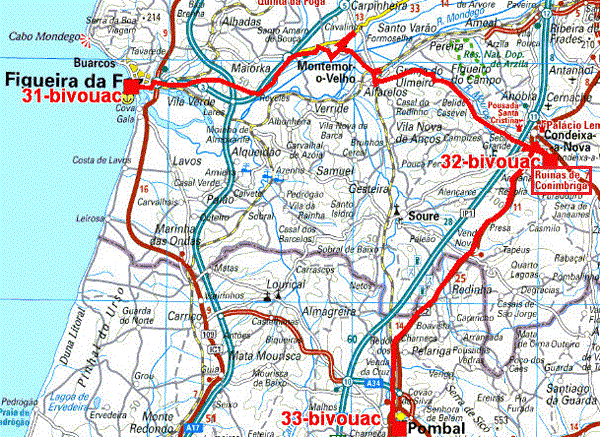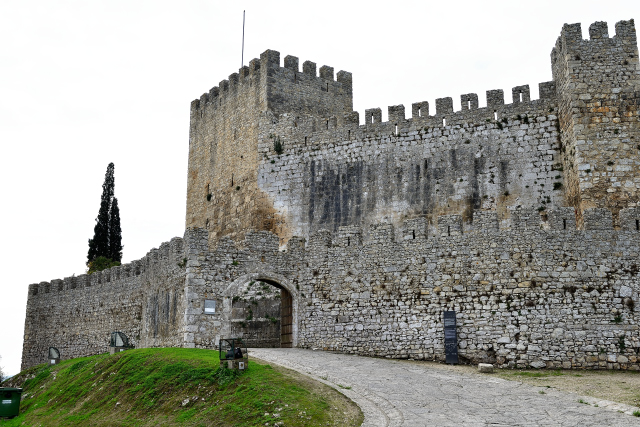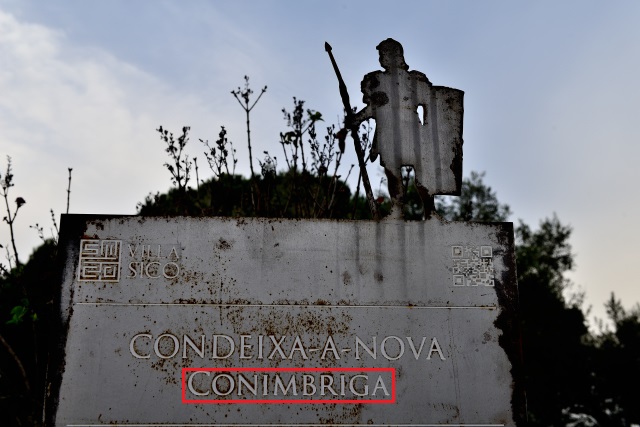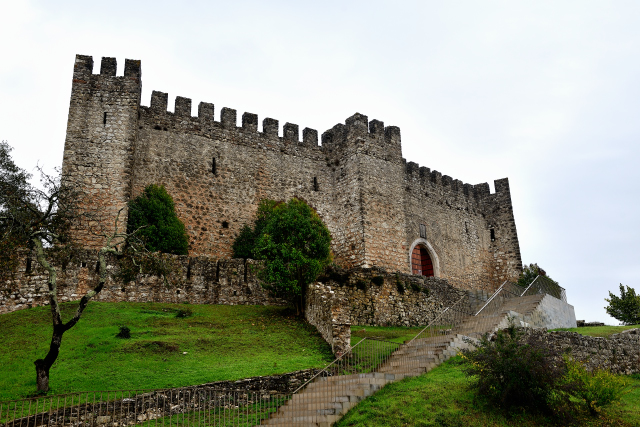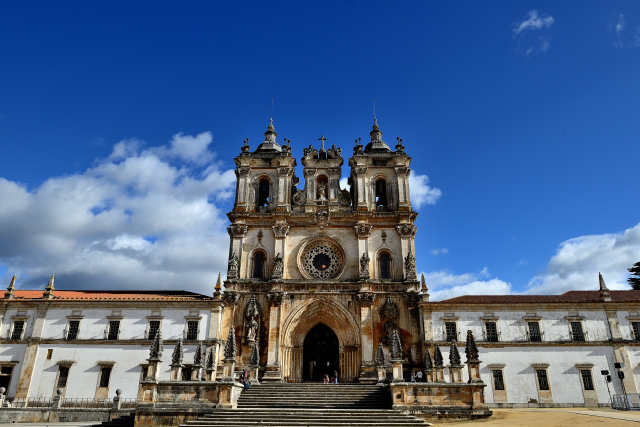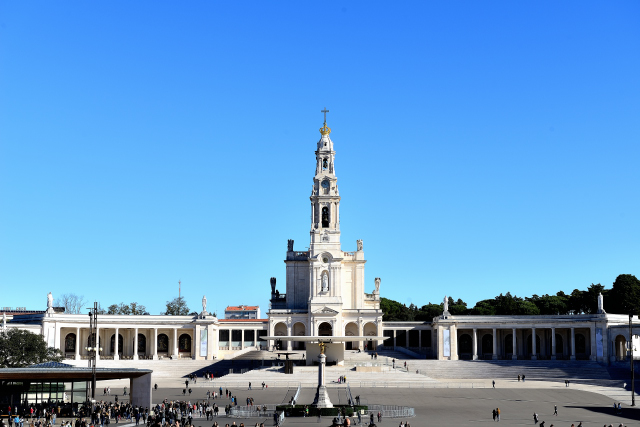Conimbriga
On Monday, November 27 I paid two major visits: The first, the
castle of Montemor-o-Velho whose majestic ruins go back to the 11th
century blocking the Moors installed in Estremadura. The church has
retables of the school of Coimbra, I give the remarkable details of
them.
Montemor-o-Velho, Castelo, click on the pic for opening the gallery
Conimbriga, click on the pic for opening the gallery
The second, a few kilometers further was Conimbriga the ruins of a
Roman city founded at the 1st century of our era. The trip shows
the ingeniousness of the Roman architects who invented the thermal
baths with an under floor heating. The mosaics are among most
sumptuous of the Iberian peninsula such as for example that with the
Swatiska. The museum exhibits some beautiful pieces coming from the
excavations. I bivouacked on the spot
Pombal
On Tuesday, November 28 was a small driving morning and visit in
the rain and in the cold. I thus stopped in Pombal to see the castle
built by the Templars to dam up the progression of the Arab
invasion. It is much less impressive than that of Montemor-o-Velho
though it was one of the first to have a keep. The rain not ceasing
falling I decided to remain on the spot beside the cemetery whose
inhabitants are peaceful and discrete, calm night assured.
Pombal, click on the pic for opening the gallery
Leiria
Wednesday, November 29 was still a short driving day, the distances
in Portugal are never very big. The town of Leiria was at the time
of the first king of Portugal, Alfonso-Henriques, the southern border of
his kingdom. He made build a strong castle against the Moors before
reconquering Santarem & Lisbon and then it fell in disuse and ruin after
the Reconquista from the two above mentioned cities. It was restored
in 14th then in the 16th century to fall again in ruin. While
entering the keep dominates the site with on its right the church
Nossa Senhora da Pensa with an elegant Gothic chorus as well as an
manuélin arcade vis-a-vis the keep. The royal palace is equipped
with an imposing room of reception giving on a gallery with arcades
dominating the old city. In the keep an exhibit shows arts of the
Middle Ages. Then I strolled in the lanes of the cheap hurdy-gurdy
on a tour of picturesque monuments. I bivouacked on a carpark. It
was a beautiful sunny and hot day.
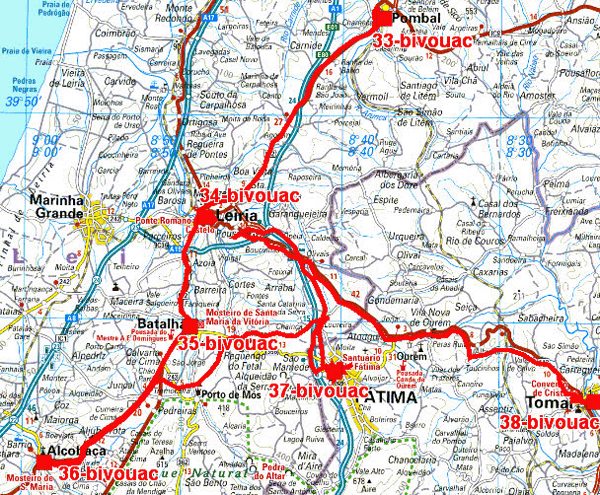
The GPS road tacklog
from Pombal to Tomar
from 2017/11/29 au 2017/12/03
Leiria, click on the pic for opening the gallery
Batalha
The monastery of Batalha, of the battle, dedicated to the Virgin was
built according to the wow of Jean d'Avis in the event of victory
at the time of the battle in 1385 on the plateau of Aljubarrota
against the more Spanishs. It is registered with UNESCO,
here,
as masterpiece of Gothic and manuélin art. It is characterized by the
absence of bell-tower, according to the rule of Dominican, as well as
by the unfinished octagonal vaults. On the right of the entry of the
church the Capela do Fundador owes its name with the tombs of king Jean
and of his wife, it is lit by blazing windows. The claustro Real is
the example of the harmonious fusion of the Gothic and manuélin styles
by the rubble filling manuélin of the arcades. The Sala do Capitulo
is dedicated in memory of soldiers fallen to the honor fields
during the Great War, WWI. The basin, Fountain, are typical monasteries
and are used now as feeding the pigeons. Capelas Imperfeitas, behind
the bedside of the church, introduced by a splendid manuélin gate are
of octagonal shape, they were to receive the tombs of the descendants
of king Edouard 1st. I bivouacked on the carpark.
Mosteiro da Batalha, click on the pic for opening the gallery
Alcobaça
On Friday, December 1 was still a short morning of road after a
night during which the temperature fell to -2°C. As in Batalha the
sun illuminates the frontage in the afternoon. Alas the sky was leaded
with some parsimonious breaks. The monastery of Alcobaça is also
registered with the world heritage of UNESCO,
here.
The church is the vastest in Portugal with a Cistercian nave among the
highest ones. The transept shelters the tombs of Ines de Castro and Pierre 1st.
The two tombs are sumptuously carved. The tomb of Pierre curiously shows
a wheel at its bedside which is not without pointing out the wheel
of the life of Buddhism, indeed archeologists think that it
is the scenes of the life of Ines and Pierre. That of Ines presents
a crucifixion at the bedside with a virgin of pain at the bottom of
the cross, evoking the end-of-life of Ines assassinated on the order
of the king Alphonse IV. She became later after the sacring of
Pierre the dead queen of Portugal. The monastery, very vast, offer
the visitors the various rooms of life of monks, the
cloister, the chapter house, cooks and refectory without forgetting
the wash-hand basin as well as the dormitory. I had stationed my
truck on a small carpark close to the monastery.
Mosteiro da Alcobaça, click on the pic for
opening the gallery
Fátima
On Saturday, December 2 on the way towards Tomar I could not stop
in Fátima, here, to see the manifestation of the faith of Portuguese
for the Virgin Mary who appeared on May 13th, 1917 to three young
shepherds, during the First World War. This appearance was
concretized by the construction of the sanctuary of Notre-Dame de
Fátima of nobaroque style with a 65-meters high tower. Southwards
of the esplanade the church da Santissima Trindade was devoted in
October 2007, it can accommodate 9000 faithful. The esplanade can
contain more than 300,000 pilgrims. As I saw, there is impossible to
remain insensitive with the piety of people who traverse the
esplanade on knees to the vault of the appearances. I bivouacked
on one of the many immense carparks near to the sanctuary.
Santuário de Fátima, click on the pic for opening the gallery
Tomar
On a hill overlooking Tomar on Sunday, December 3 I visited Convento
de Cristo inserted in a strong castle built by the Templars into the
12th century. The convent is registered with the world heritage of
UNESCO,
here. It is the largest monument of manuélin style in
Portugal whose window of the bedside of the church is the prototype.
Its construction extends from 12th to the 17th century gathering a
patchwork from styles, Roman, Gothic, manuélin and Renaissance. The
gate is partially hidden by the old chapter house and is next to the
Rotunda of the Templars, Charola back Templários. The latter was
built at the 12th century of polygonal shape it contains an octagone
with eight pillars surrounded by an ambulatory whose walls are
covered with paintings of the 16th century. The photographs
imperfectly return the strangeness and the beauty of this
construction. The second characteristic of the convent is the window
at the bottom of the church in the extravagance of the
manuélin style. The guidebook details the conceptualization represented,
a piece of choice for scholars. The conventual unit does not
comprise less than six cloisters of style of the various times of
construction. The dormitory is composed of cells opening on an
immense cruciform corridor with only one wash-hand basin for
ablutions. The refectory is consequently and is next to the
conveniences. This monastic complex is fed out of water by an
aqueduct. I attended a concert of wind instruments. While wandering
in the city I found a bivouac on a carpark in a city of dwellings.
Convento de Cristo, click
on the pic for opening the gallery
